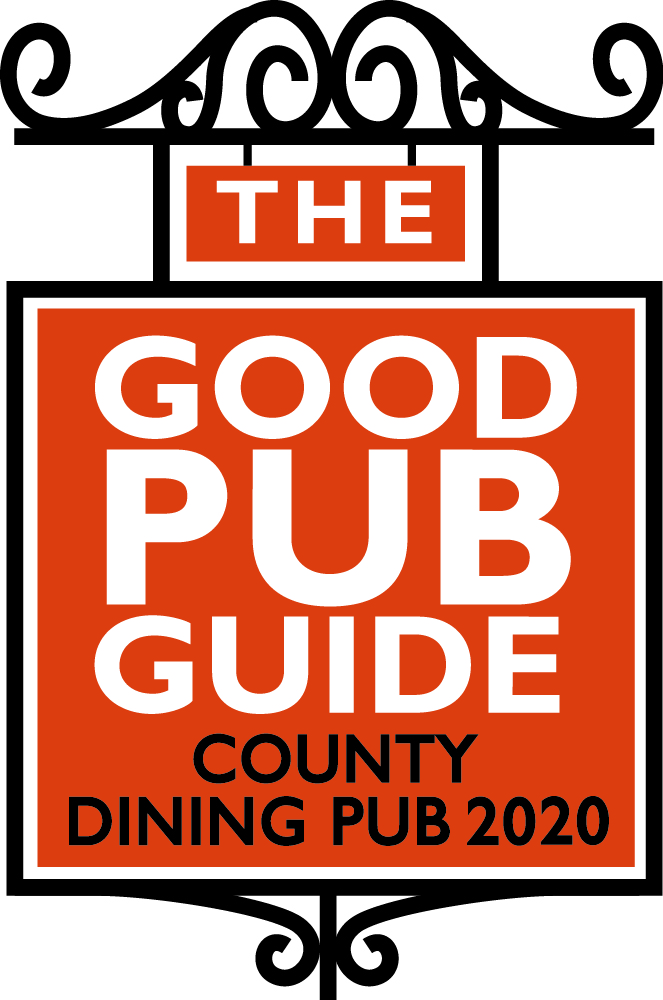Hot Cross Buns, Hot Cross Buns, One a penny, two a penny …
Inside the saloon bar a curious collection of ossified hot cross buns can be seen hanging from the ceiling. Jack Turnell took over the Inn on a Good Friday around 1900 and marked the occasion by hanging a bun from the beam. It’s a tradition that has continued ever since – even during the Second World War when a concrete bun was used at the height of food rationing. These days a prominent local from the Village is asked to hang the bun.
The Family at the bell:
Frank and Josephine Bonson took over the Bell on November 11 1938 finding it without both electricity and running water. The pump in the courtyard was the only source of water and for their first Christmas in the
building they arranged a supply of power from the butcher’s shop next door.
The outbreak of the Second World War shortly after their move to Horndon resulted in the Bell becoming even more a focal point of village life.
Josephine was charged with the task of fitting gasmasks to villagers and had particular trouble with the older and much-bearded men. She also had to contended with 40 officers and men billeted in the Bell and to drive the village taxi!
Meanwhile, Frank had become the local “fire chief” by dint of the fact that he had the only vehicle suitable for pulling the pump. It also fell on him to provide a parade ground, the Bell courtyard, for the Home Guard as well as finding temporary accommodation for villagers “bombed-out” of their homes.
Frank and Josephine’s daughter, Christine, took over from her parents along with her husband John Vereker, in 1970. Together the Vereker’s continue to develop the business to this day, assisted by the third generation of the family all of whom are involved.
Our location
Just up the road from the Bell are Hill House & High house, which house most of the Inn’s bedrooms and also The Ostlers Bar and Restaurant. Both are wonderful Georgian buildings which were originally prestigious residences in the heart of the village. High House was home to Philip Vincent, inventor of the famous Vincent motorbikes that dominated motorbike racing and speed records in the early 1900’s. A green historic plaque can be seen on the front of the property and in the Ostlers restaurant, a painting by local artist Jon McCarthy, pays homage to the classic Vincent motorcycles. The Vincent’s were a philanthropic family and around 1900 they added a Victorian wing to High House, to house a small school for local children. The bedroom suite that now takes up the ground floor of this wing is called “High School” as a nod to its former use.
The History of the Buildings
The Bell served, from its earliest days, as a coaching inn as can well be seen from the courtyard & the archway with the gallery above. Baggage would have been transferred to & from the coach roof from the balcony. It was through this archway that stage coaches would come and go carrying farmers to and from the hay and corn markets at Aldgate as well as other travellers from metropolis.
Inside is the original king post which carries roof timbers nearly a thousand years old. Much use was made of second hand timber, its proximity to the river ensuring that ship timbers were often employed. Many timbers in the building show clear evidence of earlier use.
Construction of the Bell commenced in the fifteenth century and much of the structure which we see today was completed by the time that the first of the Tudors, Henry VII, came to the throne in 1445.
One of the less pleasant incidents in the Bell’s history concerns the use of an area to the rear of the building for burning-at-the stake. It was during Mary Tudors’ troublesome reign that local landowner; Thomas Higbed was accused of heresy. After a trial during which he refused to abandon his faith, Higbed was convicted and returned to the village for the sentence to be carried out. A blue historic plaque on the front of the building commemorates the grissly event.
Village History
Horndon on the Hill has a wealth of history stretching back many centuries, having been a centre for trade and also situated on the main route from East Anglia to Kent and the channel ports.
Ferries across the Thames at Tilbury probably date back to Roman times although the first documented reference to this is 1399.
Horndon rose to a position of considerable social and commercial importance during the fourteenth and fifteenth centuries and it is only in the present century that is has adopted a more retiring position compared with its newer neighbour to the south.
The buildings in the village reflect its antiquity and importance. The parish church of St Peters and St Pauls was largely completed in 1315 and stands on the site of a much earlier building. The oldest part of the present building was constructed in 1230. Inside the church is a wonderful fifteenth century belfry frame constructed of large timbers jointed by wooden pegs. There is a story that Anne Boleyn is buried in the church-yard but this is disputed by another similarly named parish. As her parents had a connection with nearby Corringham however, it is possible that the local tradition is correct.
Elizabeth stayed at nearby Ardern Hall after reviewing the troops at Tilbury during the time of the Armada. It was at Tilbury that she made her famous speech including the lines “I know that I have the body of a week, feeble woman but I have the heart and stomach of a King and King of England too.”
The Woolmarket situated just along the High road from the Bell, was erected in the 1500’s. It was here that the Dutch merchants who had boarded their vessels at nearby Mucking or Fobbing came to trade wool from the sheep grazing on the Thames flood plain below the village. After a chequered history following the decline of the wool industry in the mid-seventeenth century, the building was restored to its present condition in the late sixties. It now serves as a meeting place for village people and societies.
‘Vivi Voco, Mortuous Plango, Fulgara Frango’
The Latin words inscribed on the ‘Bell’ of our logo, we believe means:
‘I call for the living, I toll for the dead and I scatter the lightning.’
…however, if you give it a google, ‘ole wikepedia and the likes will have a few different take it on.







